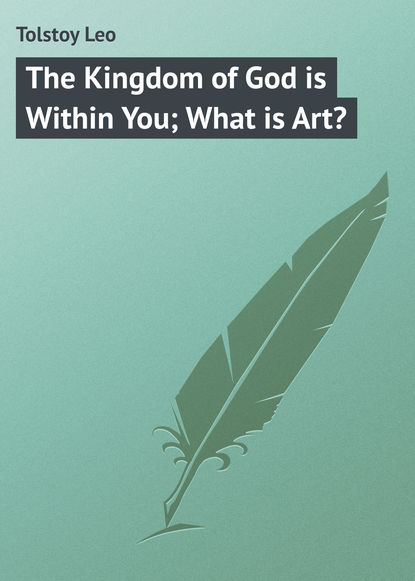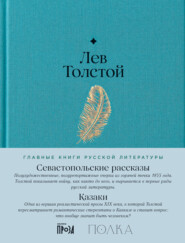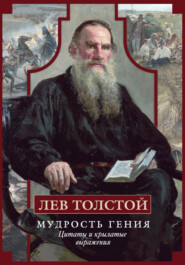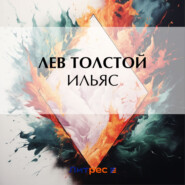По всем вопросам обращайтесь на: info@litportal.ru
(©) 2003-2024.
✖
The Kingdom of God is Within You; What is Art?
Настройки чтения
Размер шрифта
Высота строк
Поля
"What! the 'Ninth Symphony' not a good work of art!" I hear exclaimed by indignant voices.
And I reply, Most certainly it is not. All that I have written I have written with the sole purpose of finding a clear and reasonable criterion by which to judge the merits of works of art. And this criterion, coinciding with the indications of plain and sane sense, indubitably shows me that that symphony by Beethoven is not a good work of art. Of course, to people educated in the adoration of certain productions and of their authors, to people whose taste has been perverted just by being educated in such adoration, the acknowledgment that such a celebrated work is bad is amazing and strange. But how are we to escape the indications of reason and of common sense?
Beethoven's "Ninth Symphony" is considered a great work of art. To verify its claim to be such, I must first ask myself whether this work transmits the highest religious feeling? I reply in the negative, for music in itself cannot transmit those feelings; and therefore I ask myself next, Since this work does not belong to the highest kind of religious art, has it the other characteristic of the good art of our time, – the quality of uniting all men in one common feeling: does it rank as Christian universal art? And again I have no option but to reply in the negative; for not only do I not see how the feelings transmitted by this work could unite people not specially trained to submit themselves to its complex hypnotism, but I am unable to imagine to myself a crowd of normal people who could understand anything of this long, confused, and artificial production, except short snatches which are lost in a sea of what is incomprehensible. And therefore, whether I like it or not, I am compelled to conclude that this work belongs to the rank of bad art. It is curious to note in this connection, that attached to the end of this very symphony is a poem of Schiller's which (though somewhat obscurely) expresses this very thought, namely, that feeling (Schiller speaks only of the feeling of gladness) unites people and evokes love in them. But though this poem is sung at the end of the symphony, the music does not accord with the thought expressed in the verses; for the music is exclusive and does not unite all men, but unites only a few, dividing them off from the rest of mankind.
And just in this same way, in all branches of art, many and many works considered great by the upper classes of our society will have to be judged. By this one sure criterion we shall have to judge the celebrated "Divine Comedy" and "Jerusalem Delivered," and a great part of Shakespear's and Goethe's works, and in painting every representation of miracles, including Raphael's "Transfiguration," etc.
Whatever the work may be and however it may have been extolled, we have first to ask whether this work is one of real art or a counterfeit. Having acknowledged, on the basis of the indication of its infectiousness even to a small class of people, that a certain production belongs to the realm of art, it is necessary, on the basis of the indication of its accessibility, to decide the next question, Does this work belong to the category of bad, exclusive art, opposed to religious perception, or to Christian art, uniting people? And having acknowledged an article to belong to real Christian art, we must then, according to whether it transmits the feelings flowing from love to God and man, or merely the simple feelings uniting all men, assign it a place in the ranks of religious art or in those of universal art.
Only on the basis of such verification shall we find it possible to select from the whole mass of what, in our society, claims to be art, those works which form real, important, necessary spiritual food, and to separate them from all the harmful and useless art, and from the counterfeits of art which surround us. Only on the basis of such verification shall we be able to rid ourselves of the pernicious results of harmful art, and to avail ourselves of that beneficent action which is the purpose of true and good art, and which is indispensable for the spiritual life of man and of humanity.
CHAPTER XVII
Art is one of two organs of human progress. By words man interchanges thoughts, by the forms of art he interchanges feelings, and this with all men, not only of the present time, but also of the past and the future. It is natural to human beings to employ both these organs of intercommunication, and therefore the perversion of either of them must cause evil results to the society in which it occurs. And these results will be of two kinds: first, the absence, in that society, of the work which should be performed by the organ; and secondly, the harmful activity of the perverted organ. And just these results have shown themselves in our society. The organ of art has been perverted, and therefore the upper classes of society have, to a great extent, been deprived of the work that it should have performed. The diffusion in our society of enormous quantities of, on the one hand, those counterfeits of art which only serve to amuse and corrupt people, and, on the other hand, of works of insignificant, exclusive art, mistaken for the highest art, have perverted most men's capacity to be infected by true works of art, and have thus deprived them of the possibility of experiencing the highest feelings to which mankind has attained, and which can only be transmitted from man to man by art.
All the best that has been done in art by man remains strange to people who lack the capacity to be infected by art, and is replaced either by spurious counterfeits of art or by insignificant art, which they mistake for real art. People of our time and of our society are delighted with Baudelaires, Verlaines, Moréases, Ibsens, and Maeterlincks in poetry; with Monets, Manets, Puvis de Chavannes, Burne-Joneses, Stucks, and Böcklins in painting; with Wagners, Liszts, Richard Strausses, in music; and they are no longer capable of comprehending either the highest or the simplest art.
In the upper classes, in consequence of this loss of capacity to be infected by works of art, people grow up, are educated, and live, lacking the fertilizing, improving influence of art, and therefore not only do not advance toward perfection, do not become kinder, but, on the contrary, possessing highly developed external means of civilization, they yet tend to become continually more savage, more coarse, and more cruel.
Such is the result of the absence from our society of the activity of that essential organ – art. But the consequences of the perverted activity of that organ are yet more harmful. And they are numerous.
The first consequence, plain for all to see, is the enormous expenditure of the labor of working people on things which are not only useless, but which, for the most part, are harmful; and more than that, the waste of priceless human lives on this unnecessary and harmful business. It is terrible to consider with what intensity, and amid what privations, millions of people – who lack time and opportunity to attend to what they and their families urgently require – labor for 10, 12, or 14 hours on end, and even at night, setting the type for pseudo-artistic books which spread vice among mankind, or working for theaters, concerts, exhibitions, and picture-galleries, which, for the most part, also serve vice; but it is yet more terrible to reflect that lively, kindly children, capable of all that is good, are devoted from their early years to such tasks as these: that for 6, 8, or 10 hours a day, and for 10 or 15 years, some of them should play scales and exercises; others should twist their limbs, walk on their toes, and lift their legs above their heads; a third set should sing solfeggios; a fourth set, showing themselves off in all manner of ways, should pronounce verses; a fifth set should draw from busts or from nude models and paint studies; a sixth set should write compositions according to the rules of certain periods; and that in these occupations, unworthy of a human being, which are often continued long after full maturity, they should waste their physical and mental strength and lose all perception of the meaning of life. It is often said that it is horrible and pitiful to see little acrobats putting their legs over their necks, but it is not less pitiful to see children of 10 giving concerts, and it is still worse to see school-boys of 10 who, as a preparation for literary work, have learnt by heart the exceptions to the Latin grammar. These people not only grow physically and mentally deformed, but also morally deformed, and become incapable of doing anything really needed by man. Occupying in society the rôle of amusers of the rich, they lose their sense of human dignity, and develop in themselves such a passion for public applause that they are always a prey to an inflated and unsatisfied vanity which grows in them to diseased dimensions, and they expend their mental strength in efforts to obtain satisfaction for this passion. And what is most tragic of all is that these people, who for the sake of art are spoilt for life, not only do not render service to this art, but, on the contrary, inflict the greatest harm on it. They are taught in academies, schools, and conservatoires how to counterfeit art, and by learning this they so pervert themselves that they quite lose the capacity to produce works of real art, and become purveyors of that counterfeit, or trivial, or depraved art which floods our society. This is the first obvious consequence of the perversion of the organ of art.
The second consequence is that the productions of amusement-art, which are prepared in such terrific quantities by the armies of professional artists, enable the rich people of our times to live the lives they do, lives not only unnatural, but in contradiction to the humane principles these people themselves profess. To live as do the rich, idle people, especially the women, far from nature and from animals, in artificial conditions, with muscles atrophied or misdeveloped by gymnastics, and with enfeebled vital energy, would be impossible were it not for what is called art – for this occupation and amusement which hides from them the meaninglessness of their lives, and saves them from the dullness that oppresses them. Take from all these people the theaters, concerts, exhibitions, piano-playing, songs, and novels with which they now fill their time, in full confidence that occupation with these things is a very refined, æsthetical, and therefore good occupation; take from the patrons of art who buy pictures, assist musicians, and are acquainted with writers, their rôle of protectors of that important matter art, and they will not be able to continue such a life, but will all be eaten up by ennui and spleen, and will become conscious of the meaninglessness and wrongness of their present mode of life. Only occupation with what, among them, is considered art renders it possible for them to continue to live on, infringing all natural conditions, without perceiving the emptiness and cruelty of their lives. And this support afforded to the false manner of life pursued by the rich is the second consequence, and a serious one, of the perversion of art.
The third consequence of the perversion of art is the perplexity produced in the minds of children and of plain folk. Among people not perverted by the false theories of our society, among workers and children, there exists a very definite conception of what people may be respected and praised for. In the minds of peasants and children the ground for praise or eulogy can only be either physical strength: Hercules, the heroes and conquerors; or moral, spiritual, strength: Sakya Muni giving up a beautiful wife and a kingdom to save mankind, Christ going to the cross for the truth he professed, and all the martyrs and the saints. Both are understood by peasants and children. They understand that physical strength must be respected, for it compels respect; and the moral strength of goodness an unperverted man cannot fail to respect, because all his spiritual being draws him toward it. But these people, children, and peasants, suddenly perceive that besides those praised, respected, and rewarded for physical or moral strength, there are others who are praised, extolled, and rewarded much more than the heroes of strength and virtue, merely because they sing well, compose verses, or dance. They see that singers, composers, painters, ballet-dancers, earn millions of roubles and receive more honor than the saints do: and peasants and children are perplexed.
When fifty years had elapsed after Pushkin's death, and, simultaneously, the cheap edition of his works began to circulate among the people and a monument was erected to him in Moscow, I received more than a dozen letters from different peasants asking why Pushkin was raised to such dignity. And only the other day a literate[124 - In Russian it is customary to make a distinction between literate and illiterate people, i. e. between those who can and those who cannot read. Literate in this sense does not imply that the man would speak or write correctly. – Tr.] man from Saratoff called on me who had evidently gone out of his mind over this very question. He was on his way to Moscow to expose the clergy for having taken part in raising a "monament" to Mr. Pushkin.
Indeed, one need only imagine to oneself what the state of mind of such a man of the people must be when he learns, from such rumors and newspapers as reach him, that the clergy, the Government officials, and all the best people in Russia are triumphantly unveiling a statue to a great man, the benefactor, the pride of Russia – Pushkin, of whom till then he had never heard. From all sides he reads or hears about this, and he naturally supposes that if such honors are rendered to any one, then without doubt he must have done something extraordinary – either some feat of strength or of goodness. He tries to learn who Pushkin was, and having discovered that Pushkin was neither a hero nor a general, but was a private person and a writer, he comes to the conclusion that Pushkin must have been a holy man and a teacher of goodness, and he hastens to read or to hear his life and works. But what must be his perplexity when he learns that Pushkin was a man of more than easy morals, who was killed in a duel, i. e. when attempting to murder another man, and that all his service consisted in writing verses about love, which were often very indecent.
That a hero, or Alexander the Great, or Genghis Khan, or Napoleon were great, he understands, because any one of them could have crushed him and a thousand like him; that Buddha, Socrates, and Christ were great he also understands, for he knows and feels that he and all men should be such as they were; but why a man should be great because he wrote verses about the love of women he cannot make out.
A similar perplexity must trouble the brain of a Breton or Norman peasant who hears that a monument, "une statue" (as to the Madonna), is being erected to Baudelaire, and reads, or is told, what the contents of his "Fleurs du Mal" are; or, more amazing still, to Verlaine, when he learns the story of that man's wretched, vicious life, and reads his verses. And what confusion it must cause in the brains of peasants when they learn that some Patti or Taglioni is paid £10,000 for a season, or that a painter gets as much for a picture, or that authors of novels describing love-scenes have received even more than that.
And it is the same with children. I remember how I passed through this stage of amazement and stupefaction, and only reconciled myself to this exaltation of artists to the level of heroes and saints by lowering in my own estimation the importance of moral excellence, and by attributing a false, unnatural meaning to works of art. And a similar confusion must occur in the soul of each child and each man of the people when he learns of the strange honors and rewards that are lavished on artists. This is the third consequence of the false relation in which our society stands toward art.
The fourth consequence is that people of the upper classes, more and more frequently encountering the contradictions between beauty and goodness, put the ideal of beauty first, thus freeing themselves from the demands of morality. These people, reversing the rôles, instead of admitting, as is really the case, that the art they serve is an antiquated affair, allege that morality is an antiquated affair, which can have no importance for people situated on that high plane of development on which they opine that they are situated.
This result of the false relation to art showed itself in our society long ago; but recently, with its prophet Nietzsche and his adherents, and with the decadents and certain English æsthetes who coincide with him, it is being expressed with especial impudence. The decadents, and æsthetes of the type at one time represented by Oscar Wilde, select as a theme for their productions the denial of morality and the laudation of vice.
This art has partly generated, and partly coincides with, a similar philosophic theory. I recently received from America a book entitled, "The Survival of the Fittest: Philosophy of Power," 1896, by Ragnar Redbeard, Chicago. The substance of this book, as it is expressed in the editor's preface, is that to measure "right" by the false philosophy of the Hebrew prophets and "weepful" Messiahs is madness. Right is not the offspring of doctrine, but of power. All laws, commandments, or doctrines as to not doing to another what you do not wish done to you, have no inherent authority whatever, but receive it only from the club, the gallows, and the sword. A man truly free is under no obligation to obey any injunction, human or divine. Obedience is the sign of the degenerate. Disobedience is the stamp of the hero. Men should not be bound by moral rules invented by their foes. The whole world is a slippery battlefield. Ideal justice demands that the vanquished should be exploited, emasculated, and scorned. The free and brave may seize the world. And, therefore, there should be eternal war for life, for land, for love, for women, for power, and for gold. (Something similar was said a few years ago by the celebrated and refined academician, Vogüé.) The earth and its treasures is "booty for the bold."
The author has evidently by himself, independently of Nietzsche, come to the same conclusions which are professed by the new artists.
Expressed in the form of a doctrine these positions startle us. In reality they are implied in the ideal of art serving beauty. The art of our upper classes has educated people in this ideal of the over-man,[125 - The over-man (Uebermensch), in the Nietzschean philosophy, is that superior type of man whom the struggle for existence is to evolve, and who will seek only his own power and pleasure, will know nothing of pity, and will have the right, because he will possess the power, to make ordinary people serve him. – Tr.] – which is, in reality, the old ideal of Nero, Stenka Razin,[126 - Stenka Razin was by origin a common Cossack. His brother was hung for a breach of military discipline, and to this event Stenka Razin's hatred of the governing classes has been attributed. He formed a robber band, and subsequently headed a formidable rebellion, declaring himself in favor of freedom for the serfs, religious toleration, and the abolition of taxes. Like the government he opposed, he relied on force, and, though he used it largely in defense of the poor against the rich, he still held to"The good old rule, the simple plan,That they should take who have the power,And they should keep who can."Like Robin Hood, he is favorably treated in popular legends. – Tr.] Genghis Khan, Robert Macaire,[127 - Robert Macaire is a modern type of adroit and audacious rascality. He was the hero of a popular play produced in Paris in 1834. – Tr.] or Napoleon, and all their accomplices, assistants, and adulators – and it supports this ideal with all its might.
It is this supplanting of the ideal of what is right by the ideal of what is beautiful, i. e. of what is pleasant, that is the fourth consequence, and a terrible one, of the perversion of art in our society. It is fearful to think of what would befall humanity were such art to spread among the masses of the people. And it already begins to spread.
Finally, the fifth and chief result is, that the art which flourishes in the upper classes of European society has a directly vitiating influence, infecting people with the worst feelings and with those most harmful to humanity, – superstition, patriotism, and, above all, sensuality.
Look carefully into the causes of the ignorance of the masses, and you may see that the chief cause does not at all lie in the lack of schools and libraries, as we are accustomed to suppose, but in those superstitions, both ecclesiastical and patriotic, with which the people are saturated, and which are unceasingly generated by all the methods of art. Church superstitions are supported and produced by the poetry of prayers, hymns, painting, by the sculpture of images and of statues, by singing, by organs, by music, by architecture, and even by dramatic art in religious ceremonies. Patriotic superstitions are supported and produced by verses and stories, which are supplied even in schools, by music, by songs, by triumphal processions, by royal meetings, by martial pictures, and by monuments.
Were it not for this continual activity in all departments of art, perpetuating the ecclesiastical and patriotic intoxication and embitterment of the people, the masses would long ere this have attained to true enlightenment.
But it is not only in Church matters and patriotic matters that art depraves; it is art in our time that serves as the chief cause of the perversion of people in the most important question of social life, – in their sexual relations. We nearly all know by our own experience, and those who are fathers and mothers know in the case of their grown-up children also, what fearful mental and physical suffering, what useless waste of strength, people suffer merely as a consequence of dissoluteness in sexual desire.
Since the world began, since the Trojan war, which sprang from that same sexual dissoluteness, down to and including the suicides and murders of lovers described in almost every newspaper, a great proportion of the sufferings of the human race have come from this source.
And what is art doing? All art, real and counterfeit, with very few exceptions, is devoted to describing, depicting, and inflaming sexual love in every shape and form. When one remembers all those novels and their lust-kindling descriptions of love, from the most refined to the grossest, with which the literature of our society overflows; if one only remembers all those pictures and statues representing women's naked bodies, and all sorts of abominations which are reproduced in illustrations and advertisements; if one only remembers all the filthy operas and operettas, songs, and romances with which our world teems, involuntarily it seems as if existing art had but one definite aim, – to disseminate vice as widely as possible.
Such, though not all, are the most direct consequences of that perversion of art which has occurred in our society. So that what in our society is called art not only does not conduce to the progress of mankind, but, more than almost anything else, hinders the attainment of goodness in our lives.
And therefore the question which involuntarily presents itself to every man free from artistic activity and therefore not bound to existing art by self-interest, the question asked by me at the beginning of this work: Is it just that to what we call art, to a something belonging to but a small section of society, should be offered up such sacrifices of human labor, of human lives, and of goodness as are now being offered up? receives the natural reply: No; it is unjust, and these things should not be! So also replies sound sense and unperverted moral feeling. Not only should these things not be, not only should no sacrifices be offered up to what among us is called art, but, on the contrary, the efforts of those who wish to live rightly should be directed toward the destruction of this art, for it is one of the most cruel of the evils that harass our section of humanity. So that, were the question put: Would it be preferable for our Christian world to be deprived of all that is now esteemed to be art, and, together with the false, to lose all that is good in it? I think that every reasonable and moral man would again decide the question as Plato decided it for his "Republic," and as all the Church Christian and Mohammedan teachers of mankind decided it, i. e. would say, "Rather let there be no art at all than continue the depraving art, or simulation of art, which now exists." Happily, no one has to face this question, and no one need adopt either solution. All that man can do, and that we – the so-called educated people, who are so placed that we have the possibility of understanding the meaning of the phenomena of our life – can and should do, is to understand the error we are involved in, and not harden our hearts in it, but seek for a way of escape.
CHAPTER XVIII
The cause of the lie into which the art of our society has fallen was that people of the upper classes, having ceased to believe in the Church teaching (called Christian), did not resolve to accept true Christian teaching in its real and fundamental principles of sonship to God and brotherhood to man, but continued to live on without any belief, endeavoring to make up for the absence of belief – some by hypocrisy, pretending still to believe in the nonsense of the Church creeds; others by boldly asserting their disbelief; others by refined agnosticism; and others, again, by returning to the Greek worship of beauty, proclaiming egotism to be right, and elevating it to the rank of a religious doctrine.
The cause of the malady was the non-acceptance of Christ's teaching in its real, i. e. its full, meaning. And the only cure for the illness lies in acknowledging that teaching in its full meaning. And such acknowledgment in our time is not only possible, but inevitable. Already to-day a man, standing on the height of the knowledge of our age, whether he be nominally a Catholic or a Protestant, cannot say that he really believes in the dogmas of the Church: in God being a Trinity, in Christ being God, in the scheme of redemption, and so forth; nor can he satisfy himself by proclaiming his unbelief or skepticism, nor by relapsing into the worship of beauty and egotism. Above all, he can no longer say that we do not know the real meaning of Christ's teaching. That meaning has not only become accessible to all men of our times, but the whole life of man to-day is permeated by the spirit of that teaching, and, consciously or unconsciously, is guided by it.
However differently in form people belonging to our Christian world may define the destiny of man; whether they see it in human progress in whatever sense of the words, in the union of all men in a socialistic realm, or in the establishment of a commune; whether they look forward to the union of mankind under the guidance of one universal Church, or to the federation of the world, – however various in form their definitions of the destination of human life may be, all men in our times already admit that the highest well-being attainable by men is to be reached by their union with one another.
However people of our upper classes (feeling that their ascendancy can only be maintained as long as they separate themselves – the rich and learned – from the laborers, the poor, and the unlearned) may seek to devise new conceptions of life by which their privileges may be perpetuated, – now the ideal of returning to antiquity, now mysticism, now Hellenism, now the cult of the superior person (over-man-ism), – they have, willingly or unwillingly, to admit the truth which is elucidating itself from all sides, voluntarily and involuntarily, namely, that our welfare lies only in the unification and the brotherhood of man.
Unconsciously this truth is confirmed by the construction of means of communication, – telegraphs, telephones, the press, and the ever increasing attainability of material well-being for every one, – and consciously it is affirmed by the destruction of superstitions which divide men, by the diffusion of the truths of knowledge, and by the expression of the ideal of the brotherhood of man in the best works of art of our time.
Art is a spiritual organ of human life which cannot be destroyed, and therefore, notwithstanding all the efforts made by people of the upper classes to conceal the religious ideal by which humanity lives, that ideal is more and more clearly recognized by man, and even in our perverted society is more and more often partially expressed by science and by art. During the present century works of the higher kind of religious art have appeared more and more frequently, both in literature and in painting, permeated by a truly Christian spirit, as also works of the universal art of common life, accessible to all. So that even art knows the true ideal of our times, and tends toward it. On the one hand, the best works of art of our times transmit religious feelings urging toward the union and the brotherhood of man (such are the works of Dickens, Hugo, Dostoievsky; and in painting, of Millet, Bastien Lepage, Jules Breton, L'Hermitte, and others); on the other hand, they strive toward the transmission, not of feelings which are natural to people of the upper classes only, but of such feelings as may unite every one without exception. There are as yet few such works, but the need of them is already acknowledged. In recent times we also meet more and more frequently with attempts at publications, pictures, concerts, and theaters for the people. All this is still very far from accomplishing what should be done, but already the direction in which good art instinctively presses forward to regain the path natural to it can be discerned.
The religious perception of our time – which consists in acknowledging that the aim of life (both collective and individual) is the union of mankind – is already so sufficiently distinct that people have now only to reject the false theory of beauty, according to which enjoyment is considered to be the purpose of art, and religious perception will naturally take its place as the guide of the art of our time.
And as soon as the religious perception, which already unconsciously directs the life of man, is consciously acknowledged, then immediately and naturally the division of art, into art for the lower and art for the upper classes, will disappear. There will be one common, brotherly, universal art; and first, that art will naturally be rejected which transmits feelings incompatible with the religious perception of our time, – feelings which do not unite, but divide men, – and then that insignificant, exclusive art will be rejected to which an importance is now attached to which it has no right.
And as soon as this occurs, art will immediately cease to be what it has been in recent times, – a means of making people coarser and more vicious; and it will become, what it always used to be and should be, a means by which humanity progresses toward unity and blessedness.
Strange as the comparison may sound, what has happened to the art of our circle and time is what happens to a woman who sells her womanly attractiveness, intended for maternity, for the pleasure of those who desire such pleasures.
The art of our time and of our circle has become a prostitute. And this comparison holds good even in minute details. Like her it is not limited to certain times, like her it is always adorned, like her it is always salable, and like her it is enticing and ruinous.
A real work of art can only arise in the soul of an artist occasionally as the fruit of the life he has lived, just as a child is conceived by its mother. But counterfeit art is produced by artisans and handicraftsmen continually, if only consumers can be found.
Real art, like the wife of an affectionate husband, needs no ornaments. But counterfeit art, like a prostitute, must always be decked out.
The cause of the production of real art is the artist's inner need to express a feeling that has accumulated, just as for a mother the cause of sexual conception is love. The cause of counterfeit art, as of prostitution, is gain.
The consequence of true art is the introduction of a new feeling into the intercourse of life, as the consequence of a wife's love is the birth of a new man into life.
The consequences of counterfeit art are the perversion of man, pleasure which never satisfies, and the weakening of man's spiritual strength.

















